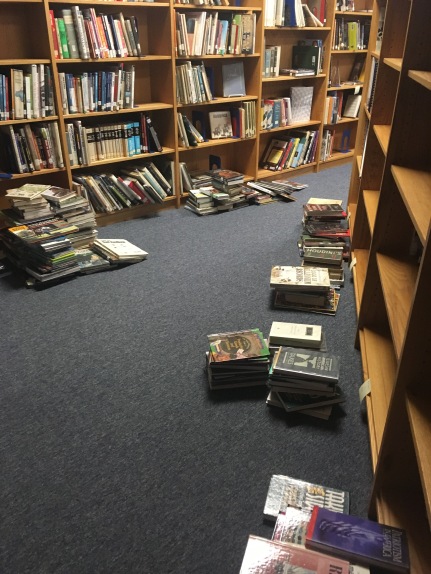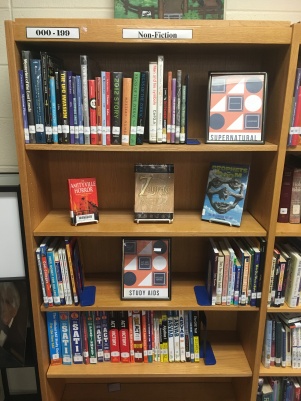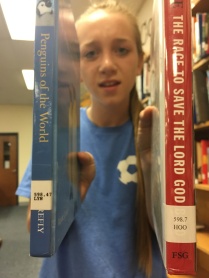Last year, I took a huge risk and decided to completely revamp our non-fiction section. It was my first year as a librarian, but I went with my gut and weeded 500+ titles and ditched the Dewey Decimal System. Working with teachers and students, I created my own organizational system that more closely resembled Barnes and Noble or Amazon.com browsing (read about the process and the categories here). After overhauling our organization, I placed a huge book order through Amazon. Side Note: When school-specific book dealers want to include modern, engaging non-fiction, please let me know. While I wait, I’ll keep my allegiance with Amazon and process every title by hand! It’s worth it.
My library workers and I were proud of our work, and we felt our library was easier to navigate, while also offering better products for patrons. I must admit, though, that when I came back at the start of the school year, I wondered:
How would these changes be received?
Would new students, who were well-adjusted to Dewey, be able to navigate?
Would these changes show positive impact with numerical data?
One month into our school year, I am happy to report positive outcomes to all of my worrisome questions!
How have these changes been received?
Students have excitedly welcomed the changes to non-fiction! With one very quick explanation, students intuitively hit the stacks. After a quick walk around our outer wall, students can easily get the lay of the land, and they now navigate with ease. I worried that my categories wouldn’t make sense to patrons, but I am happy to hear students repeatedly say things like, “This makes so much more sense this way!” I was excited to see Dad is Fat by Jim Gaffigan–a title that was missing during our entire overhaul and therefore not labeled for the new system–placed in Arts and Culture/Pop Culture. This tells me that my library workers understand the system so intuitively that they can classify books on their own.
Have students who are used to Dewey been able to transition?
Students literally cheered when I told them Dewey was no more. They confide that Dewey would make sense in one moment, and then feel fuzzy in the next. One student said, “I kind of know Dewey. He’s like that one cousin you’re familiar with, but you’re not really sure how he’s related to anyone.” It isn’t a bad system–it makes perfect sense if you use it for research. But our students were wanting to browse modern titles, and Dewey wasn’t conducive for that.
Did these changes show positive impact in data?
Prior to making the changes, our data shows non-fiction as 17% of our overall circulation in the first month of school. This year, after making the changes, we have seen that number bump to 28%! As schools stress the importance of students reading non-fiction, this is an exciting improvement! Our students want to read engaging non-fiction, it is my job to help them see that such a thing exists!
I am excited to see how these trends continue, but we still have room to grow. I am always looking for new techniques to better the system. It is clear, though, that non-fiction changes are relevant enough for modern librarians to consider. For our school, these changes have resulted in increased student engagement, a more positive atmosphere, and improved confidence with locating interesting non-fiction titles.
Please comment about how you best promote engaging non-fiction in your schools!















 Confession #2: I don’t use books for research.
Confession #2: I don’t use books for research. 








 So when I got this text from Anna (who tends to know about things years before I do), I drove 40 minutes to the nearest Barnes and Noble to purchase it. The employee there, a pleasant young dude who was perplexed that the computer said there were 50 copies in the store but were nowhere to be seen, helped me track down a copy straight from a shipment box. I started reading it while I pumped enough gas to get home. I laughed out loud multiple times, and I only got through the introduction.
So when I got this text from Anna (who tends to know about things years before I do), I drove 40 minutes to the nearest Barnes and Noble to purchase it. The employee there, a pleasant young dude who was perplexed that the computer said there were 50 copies in the store but were nowhere to be seen, helped me track down a copy straight from a shipment box. I started reading it while I pumped enough gas to get home. I laughed out loud multiple times, and I only got through the introduction.